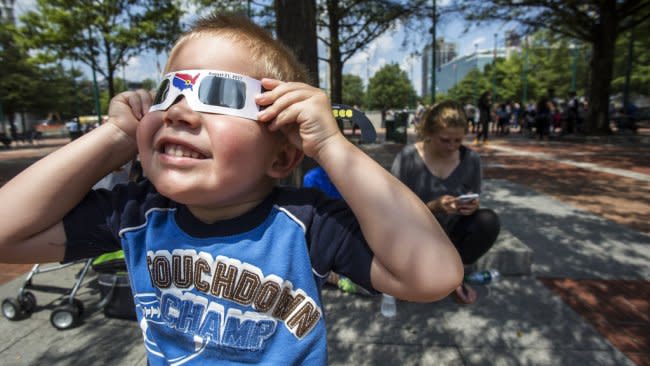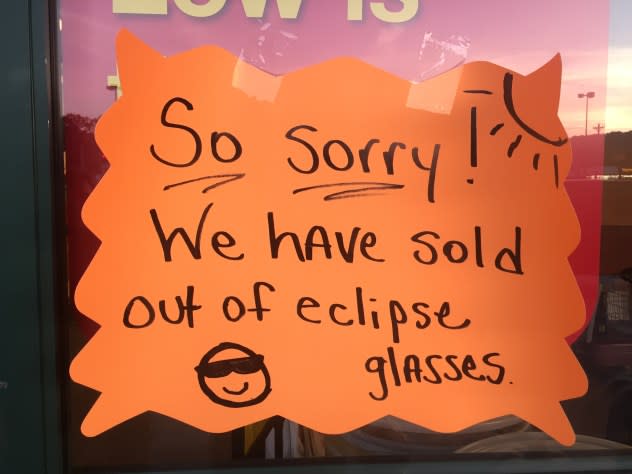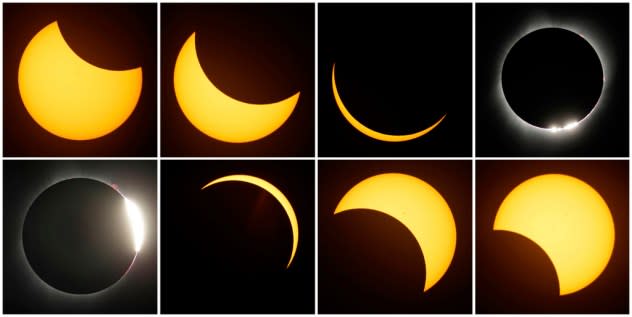How to find the right eclipse glasses before April 8 and what to avoid
Seeing a total solar eclipse can be the event of a lifetime, but looking at the sun without the proper eyewear can lead to vision issues that could linger as long as memories.
Eclipse glasses are the most popular way to safely look at the sun, as they use specially designed solar filters that can be worn with ease.
"Eclipse glasses are NOT regular sunglasses; regular sunglasses, no matter how dark, are not safe for viewing the sun," NASA explained. The solar filters used in eclipse glasses are thousands of times darker than normal sunglasses.
Looking at the sun without eclipse glasses or a solar filter "will instantly cause severe eye injury," NASA added. This includes retinal burns and permanent damage to the rod and cone cells in the eye.
The international standard for solar filters and eclipse glasses is ISO 12312-2, and solar filters with this code printed on them should be safe to use. Still, experts urge onlookers to use caution.
During the 2017 eclipse, counterfeit eclipse glasses flooded online markets and falsely claimed to meet the international standard. Because of this, it is essential to purchase eclipse glasses from reputable manufacturers.
The glasses are inexpensive, but demand will skyrocket leading up to April 8, so people planning to enjoy the upcoming solar eclipse should purchase eclipse glasses soon before online retailers sell out.
 |
GET THE FREE ACCUWEATHER APP
•Have the app? Unlock AccuWeather Alerts™ with Premium+
People who plan on using a telescope or taking pictures of the eclipse with their cameras should make sure they have the proper solar filter for their devices, as some devices may require different solar filters.
Solar filters and eclipse glasses that were used during the 2017 Great American Eclipse should still be safe to use in 2024, provided they were stored properly over the past seven years.
"If the filters aren't scratched, punctured, torn, or coming loose from their frames, you may reuse them indefinitely," the American Astronomical Society explained.
 |
This combination of photos shows the path of the sun during a total eclipse by the moon Monday, Aug. 21, 2017, near Redmond, Ore. (AP Photo/Ted S. Warren, File) |
If there are any signs of damage, or if you are unsure, it is best to discard the old glasses and purchase new ones to avoid potential eye damage.
Welding filters can also be used to look at the sun safely, but they should fall between Shade 12 and Shade 15.
There are many ways to watch a solar eclipse indirectly if you do not have the proper solar filter or eclipse glasses.
One of the most common methods is to create a pinhole projector simply by poking a hole in a piece of paper or index card. During the partial phase of a solar eclipse, the pinhole will reveal how much of the sun is being blocked by the moon.
A more compelling way to create the pinhole effect is to visit the kitchen and borrow a pasta strainer. Each hole acts like a pinhole projector, resulting in dozens of crescent-shaped beads of light.
 |
A member of the White House kitchen staff brings out a colander to view the solar eclipse at the White House in Washington, Monday, Aug. 21, 2017. (AP Photo/Andrew Harnik) |
Crescent shapes may also appear in the shadow of trees during a solar eclipse. However, this may not be reliable during the upcoming eclipse, as trees in some areas of the county will not have leaves on their branches in early April.
Want next-level safety, ad-free? Unlock advanced, hyperlocal severe weather alerts when you subscribe to Premium+ on the AccuWeather app. AccuWeather Alerts™ are prompted by our expert meteorologists who monitor and analyze dangerous weather risks 24/7 to keep you and your family safer.




